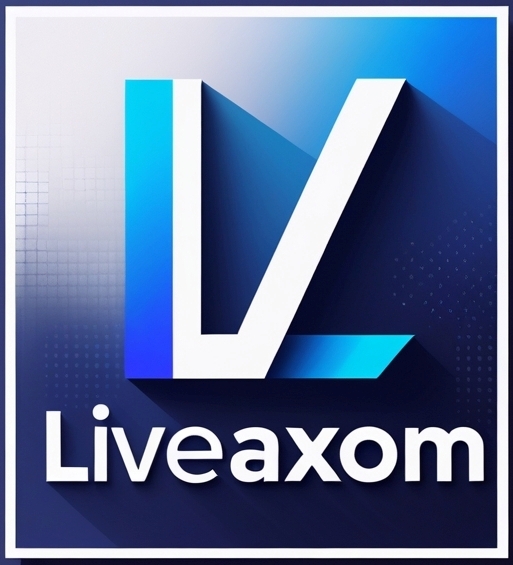Explore the latest developments in stablecoins, their role in the crypto ecosystem, regulatory landscape, and future outlook for 2025.
Key Points
- Stablecoins provide stability in the volatile crypto market, acting as a bridge to traditional finance.
- Their market cap has grown significantly, reaching over $220 billion in 2025, with transaction volumes surpassing traditional payment systems.
- Regulatory developments, like U.S. legislation and Europe’s MiCA, are shaping their adoption, though compliance issues persist.
- Traditional financial institutions are entering the stablecoin space, potentially increasing credibility and use.
- Stablecoins support the U.S. dollar’s global dominance but face challenges like scalability and regulatory uncertainty.
What Are Stablecoins?
Stablecoins are cryptocurrencies designed to maintain a stable value, typically pegged to assets like the U.S. dollar. They seem likely to be essential for crypto transactions, offering a reliable medium of exchange in a market known for price swings. Research suggests they enable seamless trading, remittances, and decentralized finance (DeFi) applications, making them a cornerstone of the crypto ecosystem.
Why Are They Growing?
The evidence leans toward stablecoins becoming a major force due to their utility and growing acceptance. In 2025, their market capitalization has reportedly surpassed $220 billion, driven by increased adoption and integration with traditional finance. Their ability to facilitate fast, low-cost transactions has made them a preferred choice for many users, though regulatory scrutiny remains a point of contention.
What’s Next?
It seems likely that stablecoins will see explosive growth in 2025, with predictions of their market doubling. However, debates around regulation and transparency, particularly for major players like Tether, highlight potential risks. Their role in global finance, especially in supporting the U.S. dollar, is widely acknowledged, but scalability and compliance challenges could impact their trajectory.
Stablecoins: The Backbone of Crypto Transactions
Introduction
Stablecoins have emerged as a cornerstone of the cryptocurrency ecosystem, providing a bridge between the volatility of digital assets and the stability of traditional fiat currencies. As we move into 2025, their role is becoming increasingly pivotal, with significant developments shaping their future. From regulatory advancements to the entry of traditional financial institutions, stablecoins are at the forefront of financial innovation. This article explores their growth, utility, regulatory landscape, and what lies ahead for these digital assets.
The Rise of Stablecoins
The year 2025 has seen an unprecedented surge in stablecoin adoption and market capitalization. USD stablecoins now exceed $220 billion in market cap, representing 99.8% of all fiat-denominated stablecoins and about 1% of the U.S. money supply (M2). This marks a 59.7% year-to-date growth, with the stablecoin-to-M2 ratio increasing by 40.9% year-over-year Outlier Ventures. Stablecoin issuers hold $116 billion in U.S. Treasuries, making them the 20th largest direct holders globally, surpassing nations like Germany and Mexico.
Transaction volumes have hit record highs, with $27.6 trillion transferred last year, surpassing Visa and Mastercard’s combined 2024 totals World Economic Forum. This underscores their growing utility as a medium of exchange. For instance, in Singapore, stablecoin payments reached $1 billion, reflecting their global traction Bloomberg.
| Metric | Value |
|---|---|
| USD Stablecoin Market Cap | $220 billion |
| Share of Fiat-Denominated Stablecoins | 99.8% |
| U.S. Treasuries Held | $116 billion |
| Transaction Volume (2024) | $27.6 trillion |
| Year-to-Date Growth (2025) | 59.7% |
Role in the Crypto Ecosystem
Stablecoins provide stability in an otherwise volatile crypto market, making them essential for trading, DeFi, and cross-border transactions. They allow users to move in and out of positions without exposure to price fluctuations of cryptocurrencies like Bitcoin Bitcoin Price Surges. In DeFi, stablecoins like Tether (USDT) and USD Coin (USDC) are critical for lending, borrowing, and yield farming on platforms like Aave and Compound DeFi Llama.
They also enable faster, cheaper cross-border remittances, particularly in regions with limited banking access. This utility has driven their adoption, with stablecoins facilitating over $24 trillion in transactions last year, positioning them as a foundational tool for blockchain-hosted finance Outlier Ventures.
Case Study: Cross-Border Remittances
Consider Maria, a worker in the Philippines sending money to her family in the U.S. Traditional services like Western Union charge high fees and take days to process. With USDC, Maria buys the stablecoin on an exchange, sends it to her family’s digital wallet instantly, and they can redeem it for USD or use it directly. This process saves time and money, promoting financial inclusion for the unbanked.
Types of Stablecoins
Stablecoins are categorized by their backing mechanisms:
- Fiat-Collateralized Stablecoins: Backed by fiat reserves, such as USDT ($143 billion market cap) and USDC ($58 billion). Issuers hold equivalent fiat to ensure stability, though transparency issues, like Tether’s $41 million fine in 2021, raise concerns CFTC.
- Crypto-Collateralized Stablecoins: Backed by cryptocurrencies, often overcollateralized (e.g., DAI on Ethereum Ethereum 2.0 Update). They offer decentralization but face volatility risks.
- Algorithmic Stablecoins: Use algorithms to adjust supply and maintain their peg (e.g., TerraUSD). Their 2022 collapse highlighted significant risks.
| Type | Examples | Advantages | Risks |
|---|---|---|---|
| Fiat-Collateralized | USDT, USDC | High stability | Issuer trust, transparency |
| Crypto-Collateralized | DAI | Decentralized | Backing asset volatility |
| Algorithmic | TerraUSD | No collateral needed | High risk of collapse |
Regulatory Landscape
The regulatory environment for stablecoins is evolving rapidly. In the U.S., legislation like the STABLE and GENIUS acts aims to regulate dollar-based stablecoins, potentially enabling banks and fintechs to issue them Outlier Ventures. A landmark bill has advanced in the Senate Banking Committee Bloomberg. In Europe, the Markets in Crypto-Assets (MiCA) regulation, fully implemented by January 2025, encourages bank custody services but may lead to delisting non-compliant stablecoins like USDT, favoring USDC Cointelegraph.
Globally, there’s a push for transparency, with calls for stricter disclosure of reserve holdings SEC Statement. These developments could enhance credibility but also pose compliance challenges for issuers.
Traditional Finance and Stablecoins
Traditional financial institutions are increasingly embracing stablecoins. Standard Chartered partnered with Animoca Brands and HKT to launch an HKD-backed stablecoin Standard Chartered. Bank of America plans to issue its own stablecoin CoinDesk. Stripe’s $1.1 billion bridge deal signals a push into stablecoins CNBC. These moves could bring stability and wider adoption, integrating stablecoins with existing financial systems.
Stablecoins and the U.S. Dollar

USD-pegged stablecoins reinforce the dollar’s global dominance, representing 1% of U.S. M2 and holding significant U.S. Treasuries Outlier Ventures. At the White House Crypto Summit, the U.S. Treasury Secretary emphasized their role in maintaining the dollar as the world’s reserve currency SEC Statement. While local currency stablecoins, like the UAE’s dirham-backed AE Coin, are emerging, USD-pegged coins dominate Cointelegraph.
Future Outlook
Stablecoins are poised for explosive growth in 2025, with predictions suggesting USDT and USDC’s combined market cap could double or triple Galaxy Digital. Regulatory clarity, like MiCA and potential U.S. crypto-friendly laws, could drive adoption X Post. New issuers—banks, fintechs, and governments—may reshape the market, but challenges like regulatory uncertainty, blockchain scalability, and security risks (e.g., Major Crypto Exchange Security Breach) persist. Innovations in layer-2 solutions and interoperability will be crucial.
Stablecoins in DeFi Lending
In DeFi, stablecoins power lending and borrowing. Alex, for example, deposits USDT into Aave to earn higher interest than traditional banks. He can also borrow stablecoins using crypto collateral for trading or investing, benefiting from a 24/7 system without intermediaries AI News Today.
Challenges and Opportunities
Regulatory uncertainty could fragment the market, while scalability issues challenge blockchain networks as transaction volumes grow. Security remains critical after incidents like TerraUSD’s collapse. However, stablecoins offer opportunities for financial inclusion, empowering unbanked populations, and could integrate with traditional finance or CBDCs for more efficient systems Top AI News 2025.
Conclusion
Stablecoins are the backbone of crypto transactions, offering stability, utility, and a bridge to traditional finance. As 2025 unfolds, regulatory developments, traditional finance adoption, and technological advancements will shape their trajectory, making them integral to global finance.

